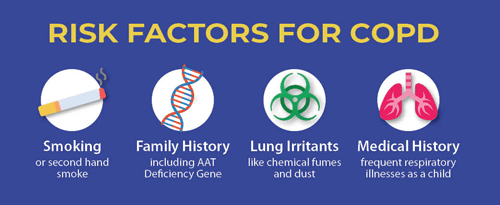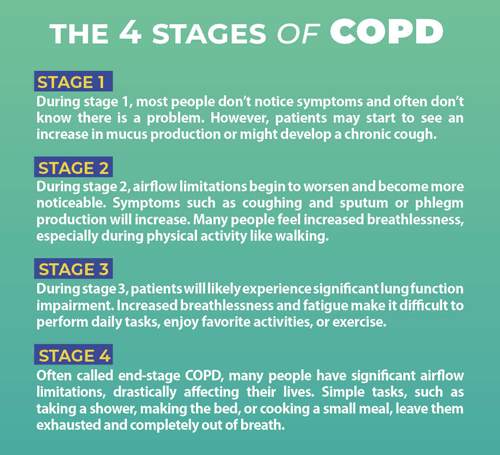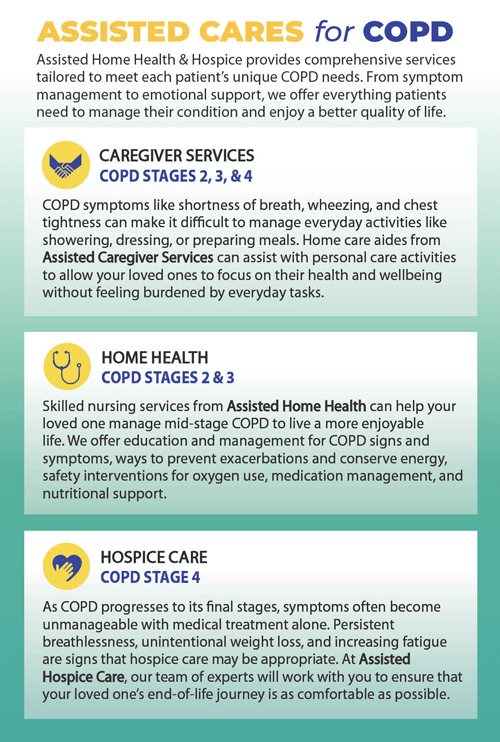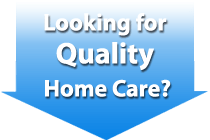Disease Type
 COPD can be a difficult journey to navigate, but you do not have to go it alone. Choosing the right home care service, such as Assisted Home Health and Hospice, can ease the burden associated with the debilitating disease and provide much-needed support and comfort for patients and their loved ones.
COPD can be a difficult journey to navigate, but you do not have to go it alone. Choosing the right home care service, such as Assisted Home Health and Hospice, can ease the burden associated with the debilitating disease and provide much-needed support and comfort for patients and their loved ones.
COPD (Chronic Obstructive Pulmonary Disease) is a group of ongoing diseases, such as Emphysema and Chronic Bronchitis, that damage the lungs and make breathing difficult. Emphysema is an irreversible disease that causes shortness of breath and damages the alveoli (air sacs) in the lungs. Chronic bronchitis is when the airways in your lungs (bronchi) get irritated and swollen, causing mucus to build, which leads to coughing, wheezing, and chest pain.
The COPD Myth
Once thought to be a smoker’s disease, COPD can be caused by other factors such as environmental pollutants, asthma, secondhand smoke, and even genetics. In fact, according to the American Lung Association, more than sixteen million people have been diagnosed with COPD making it the third leading cause of death in the United States.
The 4 Stages of COPD
Although there is no cure for COPD, it is treatable- and with proper care and symptom management, excellent quality of life is achievable. Therefore, it is important to know the four stages of COPD to understand the disease better and recognize the symptoms to slow down progression, prevent flare-ups, and decrease hospital visits.
Stage 1 (Mild):
The main symptoms one might experience during this stage are chronic cough, reduced airflow to the lungs, and sputum production. Throughout the first stage, signs may be too minimal to recognize, lowering the chance of an early diagnosis. However, lung damage still occurs. Therefore, patients with COPD need to take steps to improve their health and prevent the condition from getting worse. Quitting smoking is the most important thing you can do for your COPD. Avoiding lung irritants, eating a healthy diet, and exercising more will also help improve your COPD. Adopting a lifestyle change can be difficult, but Assisted can help. Home Health Aides can grocery shop, prepare nutritious meals to meet dietary requirements, and help patients stay active to get the exercise they need.
Stage 2 (Moderate):
The symptoms previously experienced through Stage 1 intensify during this stage. Cough and mucus production become more severe and begin to affect daily life. In addition, you may start to have other symptoms such as wheezing, fatigue, and mood changes. Treatment can include bronchodilators, pulmonary rehabilitation,
corticosteroids, or oxygen if experiencing flare-ups. Assisted’s Telehealth services allow patients to receive regular check-ups and check-ins from their medical team without leaving their homes. The benefits of telehealth are many: improved access to care, increased convenience, and improved health outcomes.
Stage 3 (Severe):
As your COPD progresses and you enter Stage 3, you may notice increased symptoms. Problems you may experience can include fatigue, tightness of the chest, difficulty taking deep breaths, and frequent flare-ups that can lead to hospitalization. Treatment, like Stage 2, can include bronchodilators, pulmonary rehabilitation, and corticosteroids. However, lung surgery or oxygen therapy may be necessary to slow the advancement of COPD. Assisted’s skilled nursing staff can provide education and management for COPD signs and symptoms, ways to prevent exacerbations and conserve energy, safety interventions for oxygen use, medication management, and nutritional support. Our goal is to help our patients manage their COPD to live as full and active lives as possible.
Stage 4 / End Stage (Very Severe):
The final stage of COPD. During this stage, you may experience flare-ups resulting in hospital visits, severe limitations in daily activities such as walking, trouble swallowing, and even confusion and memory loss. Other complications include frequent lung infections, respiratory failure, and changes in consciousness. At this stage, your doctor may recommend hospice care to ease the symptoms and help you feel more comfortable. Assisted Hospice offers teams of dedicated doctors, nurses, counselors, and volunteers who provide physical, emotional, and spiritual support. Together, they will work to manage symptoms and provide care for the patients and their family to ensure the final weeks or months of life are in a comfortable setting surrounded by loved ones.
Assisted Home Health & Hospice is here to help you through every step of the COPD journey, from diagnosis to end-of-life care. We provide comprehensive services that are tailored to meet each patient’s unique needs, and we work closely with the patient’s physician to ensure that all their needs are being met. We also offer support and resources for loved ones to better understand COPD and how to best support their loved ones during this difficult time. If you or someone you love is dealing with COPD, visit us at www.AssistedCares.com or call 800-949-6555 to learn more about how we can help.
Need Help? Call Our Professional Staff Now...800-949-6555
Awards and Certifications
Top Agency

Association of America

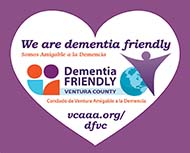
The owner of this website has made a commitment to accessibility and inclusion, please report any problems that you encounter using the contact form on this website. This site uses the WP ADA Compliance Check plugin to enhance accessibility.



